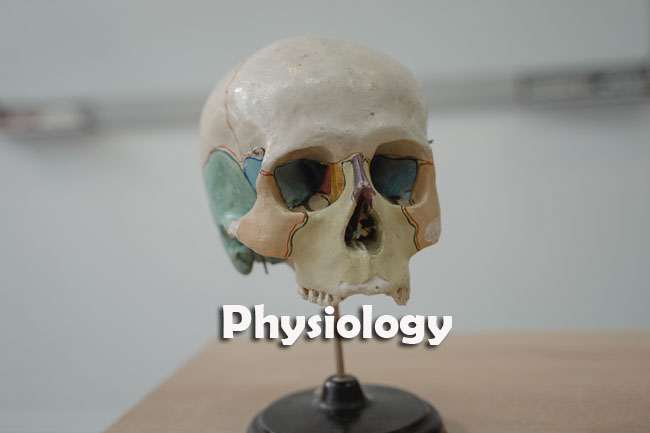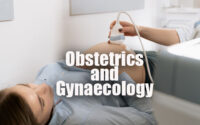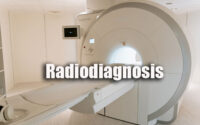Physiology Quiz
Aspirants can find free downloading for Topic wise Physiology Quiz Papers. Applicants can just click on those git physiology Sample Papers and practice them to get a good score. Therefore, you can also visit the official site to get more renal physiology Sample Question Papers.

The applicants who are searching for the sensory physiology Quiz Question Papers reached the right page. Hence, applicants can download the renal physiology Model Papers with Answers pdf from the below free downloading links.
Here are certain direct links are given to download the renal physiology Sample Papers to help the participants who are in preparation for their exams. Hence download the git physiology Quiz Previous Year Question Paper subject wise and practice by solving the questions. Use this previous year question paper of sensory physiology as a reference for your preparation.
Quiz on Physiology
1. Which of the following centres limits the duration of inspiration. And increases respiratory rate?
(1) Dorsal respiratory group
(2) Ventral respiratory group
(3) Pneumotaxic centre
(4) Apneustic centre
2. Calculate Residual Volume given:
Dead space = 150 ml; Functional Residual Capacity = 3l, Tidal volume = 650 ml; Expiratory Reserve volume = 1.5 l, Respiratory rate = 15 breaths/min; Total lung capacity = 8 l.
(1) 2500 ml
(2) 1500 ml
(3) 1000 ml
(4) 500 mi
3. What is the main site of estrogen synthesis in the male?
(1) Osteoblasts
(2) Prostate cells
(3) Liver cells
(4) Leydig cells
4. The site of fertilization is:
(1) Ampulla of fallopian tube
(2) Uterus
(3) Cervix
(4) Ovary
5. Secretion of testosterone is under the control of:
(1) FSH
(2) LH
(3) ACTH
(4) Growth hormone
6. Angiotensin-II acts on which of the following to control aldosterone
(1) Zona reticularis
(2) Zona fasciculata
(3) Zona glomerulosa
(4) Adrenal medulla
7. The hormone that is both synthesised and stored in the pituitary is:
(1) ADH
(2) Growth Hormone (GH)
(3) Growth Hormone Releasing Hormone (GHRH)
(4) Somatostatin
8. Growth hormone secretion is increased by which of the following:
(1) Exercise
(2) Hyperglycemia
(3) Aging
(4) Somatostatin
9. Which of the following — steroid hormones is NOT synthesised in zona fasciculata?
(1) Cortisol
(2) Corticosterone
(3) Deoxycorticosterone
(4) Aldosterone
10. Which of the following pairs is INCORRECT?
(1) Glucagon — increased gluconeogenesis
(2) Glucagon — increased glycogenolysis in skeletal muscle
(3) Glucagon — increased glycogenolysis in liver
(4) Cortisol —- increased gluconeogenesis
11. Rate of excretion of calcium ions by the kidney is increased by
(1) Metabolic alkalosis
(2) Decrease in parathyroid hormone
(3) Increase in phosphate ion in plasma
(4) Decrease in calcitonin
12. Greatest increase in insulin secretion is produced by:
(1) Glucose and somatostatin
(2) Amino acids and somatostatin
(3) Amino acids and glucose
(4) Amino acids
13. Sour taste will be clicited by which of the following?
(1) Hydrogen ions
(2) Ketones
(3) Alkaloids
(4) Amino acids
14. The focal length of a convex lens is 1 cm. What is the refractive power of the lens in diopters?
(1) +0.1
(2) +1
(3) +10
(4) +100
15. In an unclothed person, most of the heat loss at room temperature occurs by:
(1) Radiation
(2) Convection
(3) Evaporation
(4) Conduction to objects
16. If the environmental temperature is 106 °F and relative humidity is less than 10%, heat loss in a normal person will occur by:
(1) Evaporation
(2) Conduction
(3) Convection
(4) Radiation
17. Which of the following is normally seen during exercise?
(1) Decrease sympathetic output
(2) Renoconstriction
(3) Arteriolar dilation in non-exercising muscles
(4) Decrease in epinephrine by adrenals
18. If a person is at the end of a 10 km run, where would there be most vasoconstriction?
(1) Coronary
(2) Exercising muscle
(3) Intestinal
(4) Cerebral
19. Which of the following is seen at the onset of exercise?
(1) Decrease in coronary blood flow
(2) Decrease in cerebral blood flow
(3) Increased venous constriction
(4) Decrease in mean systemic filling pressure
20. Which of the following muscles are used for expiration by a young 25 year old male in a 10 km race?
(1) Scaleni
(2) Sternocleidomastoid
(3) Diaphragm only
(4) Internal intercostals and abdominal recti
| Questions and Answers | Quiz |
| MCQs | Practice Set |
| Nursing Exam | HESI A2 |
21. Which of the following causes stimulation of ventilation during strenuous exercise?
(1) Decrease in mean arterial PO2
(2) Decrease in mean venous PO2
(3) Collateral impulses from higher brain centres
(4) Increase in mean arterial PCO2
22. Which of the following is the correct combination of mean arterial PO2, PCO2 and pH in a healthy athlete during strenuous exercise?
(1) PO2 — No change PCO2 — No change, pH — No change
(2) PO2 — Increase, PCO2 — Increase pH — Increase
(3) PO2 — Decrease PCO2 — Decrease pH — Decrease
(4) PO2 — Increase PCO2 — Decrease pH — Increase
23. Calculate the resting cardiac output given that the cardiac reserve is 300% with a maximum cardiac output of 16 l/min.
(1) 5.33 l/min
(2) 6l/min
(3) 3 l/min
(4) 4 l/min
24. The smallest decrease in blood flow occurs in which of the following organs if a person has been exercising for 1 hour?
(1) Intestine
(2) Kidney
(3) Pancreas
(4) Brain
25. The blood flow to skeletal muscles under normal physiological conditions is determined by:
(1) Vasopressin
(2) Capillary oncotic pressure
(3) Metabolic needs
(4) Sympathetic nerves
26. The lens of the eye of a 70 year old has become totally unaccommodating. The condition is
(1) Amblyopia
(2) Presbyopia
(3) Myopia
(4) Hyperopia
27. The organ of Corti is located in which compartment of Cochlea:
(1) Scala tympani
(2) Scala vestibuli
(3) Scala media
(4) Saccule
28. Which one of the following is a mechanism activated by cold?
(1) Hunger
(2) Sweating
(3) Anorexia
(4) Apathy
29. The insensible water loss under normal conditions is upto:
(1) 10 ml/h
(2) 50 ml/h
(3) 150 ml/h
(4) 500 ml/h
30. Area of hypothalamus on which cytokines act to cause fever is:
(1) Ventroposterolateral nucleus
(2) Supraoptic nucleus
(3) Preoptic nucleus
(4) Area postrema
31. In malignant hyperthermia the mutations in gene coding for which of the following is seen
(1) Nicotinic receptor
(2) Ryanodine receptor
(3) Muscarinic receptor
(4) Tyrosine kinase receptor
32. Which of the following hormones produces a slow but prolonged increase in heat production by the body?
(1) Epinephrine
(2) Norepinephrine
(3) Insulin
(4) Thyroid hormone
33. Heat exchange between objects at different temperatures when in contact with each other is by:
(1) Evaporation
(2) Conduction
(3) Convection
(4) Radiation
34. The ability of the body to return the temperature back to normal spontaneously is lost at rectal temperature of about:
(1) 28°C
(2) 30°C
(3) 32°C
(4) 34°C
35. Which fibres carry impulses from cold receptors?
(1) Aα
(2) Aβ
(3) Aȣ & C
(4) B
36. The gradual loss of hearing due to ageing is called
(1) Presbycusin
(2) Presbyopia
(3) Macular degeneration
(4) Wallerian degeneration
37. Hot flushes seen in menopause can be prevented by giving
(1) LH
(2) Estrogen
(3) Progesterone
(4) Testosterone
38. The testicular descent into the inguinal region during fetal development depends on
(1) LH
(2) Testosterone
(3) Mullerian inhibing substance
(4) Inhibin
39. The neurofibrillary tangles seen in Alzheimer’s disease are made up of:
(1) β-amyloid
(2) Tar protein
(3) Amyloid precursor protein
(4) Both B-amyloid and Tar protein
40. REM constitutes how much percentage of total sleep time in full term neonates:
(1) 20%
(2) 25%
(3) 50%
(4) 80%
41. Which of the following statements regarding growth periods in humans is INCORRECT?
(1) There are two periods of rapid growth.
(2) Pubertal growth period is due to the effect of hormones.
(3) Closure of epiphyses in long bones is due to progesterone.
(4) The growth in infancy is episodic.
42. Which of the following statements regarding “Catch up growth” is false?
(1) Growth rate is greater than normal.
(2) Growth is rapid till previous growth curve is reached and then slows to normal.
(3) Growth rate is slower than normal.
(4) It occurs following starvation in children.
43. In primary visual cortex, in the layer-IV, which cells detect orientation of lines and borders
(1) Complex cells
(2) Hyper complex cells
(3) Border cells
(4) Simple cells
44. To which of the following group of cells do the olfactory receptor cells belong:
(1) Multipolar neurons
(2) Pseudounipolar neurons
(3) Bipolar neurons
(4) Fibroblasts
45. Intraocular fluid is secreted by:
(1) Iris
(2) Lens
(3) Cornea
(4) Ciliary processes



